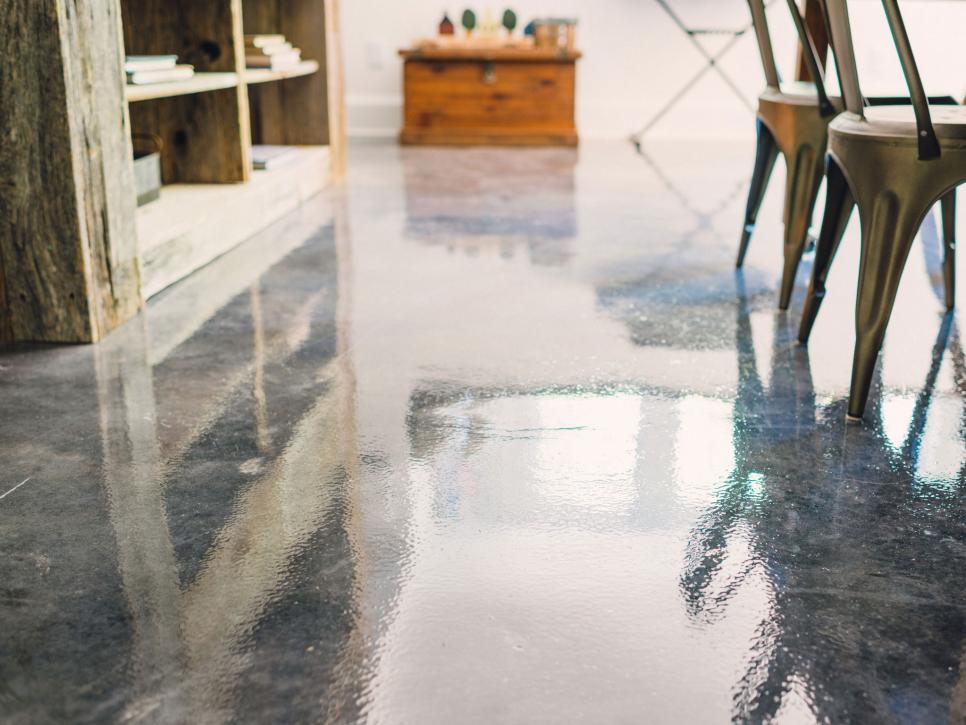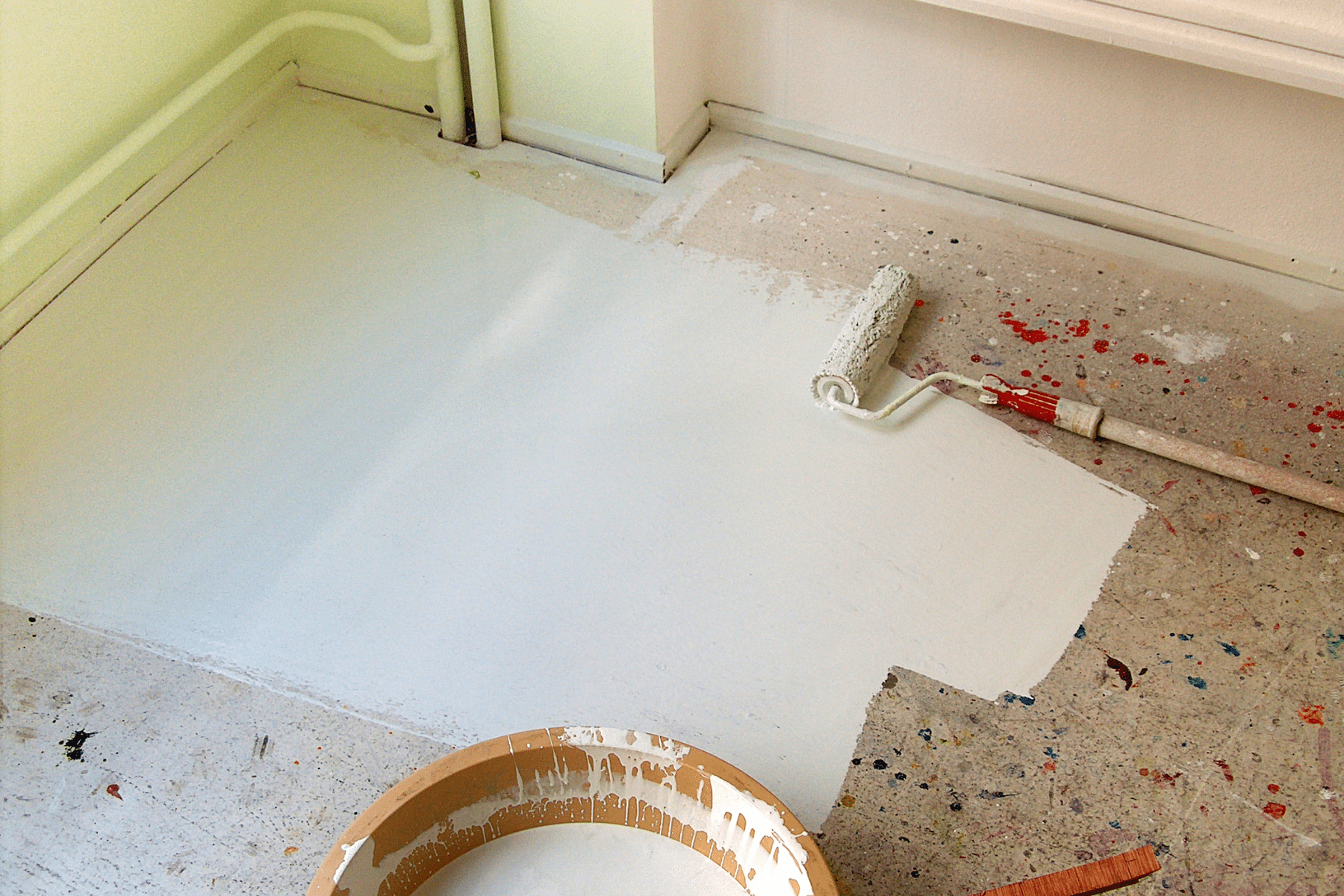Peel-and-Stick Vinyl: Affordable and Easy-to-Install Basement Flooring
When you’re looking for a quick and budget-friendly way to upgrade your basement flooring, peel-and-stick vinyl is a fantastic option. It’s easy to install, doesn’t break the bank, and comes in a variety of styles to suit any design preference. Whether you want the look of wood, tile, or stone, peel-and-stick vinyl has you covered without the hassle of traditional flooring installation.
- Budget-Friendly and Low Maintenance Peel-and-stick vinyl are incredibly cost-effective. You can find a wide range of styles at affordable prices, and since the installation is DIY-friendly, you save even more by avoiding labor costs. I’ve always loved how low maintenance this flooring option is—once it’s down, you simply need to sweep or mop occasionally to keep it looking fresh. There’s no need to worry about grout or special cleaning products.
- DIY Installation One of the biggest selling points for peel-and-stick vinyl is how easy it is to install. No professional experience is required—you just peel off the backing and press the tiles or planks into place. I’ve found that the process can even be a fun weekend project, and it’s especially satisfying to see the instant transformation. Plus, if you make a mistake, you can usually reposition the tile before it’s fully adhered.
- Waterproof and Durable Basements are prone to moisture, and peel-and-stick vinyl is an excellent choice for handling potential dampness. Most vinyl options are waterproof, which makes them ideal for basement environments where spills or leaks could be an issue. I’ve always appreciated that this material is durable and can withstand foot traffic, making it perfect for a space that might be used as a playroom, home gym, or entertainment area.
- Variety of Styles What I love most about peel-and-stick vinyl is the wide range of styles available. Whether you want the sleek look of wood, the elegance of stone, or the classic appeal of ceramic tiles, vinyl can mimic these materials convincingly. I’ve seen vinyl tiles that look so much like hardwood that it’s hard to tell the difference at first glance. The endless design possibilities make it easy to customize your basement exactly the way you envision it.
- Perfect for Uneven Surfaces If your basement floor isn’t perfectly level, peel-and-stick vinyl can help smooth things out. The tiles or planks can conform to slightly uneven surfaces, and if you have any cracks or imperfections, they’re easily covered. I’ve found this feature to be incredibly useful in older homes where the basement floor may have some wear and tear over time.
- Temporary but Reliable While peel-and-stick vinyl is durable, it’s also a good option if you’re looking for something more temporary. If you’re renting or just want a quick fix before committing to a more permanent flooring solution, vinyl can be easily removed when it’s time for an upgrade. It’s reliable enough to last several years, but flexible if your plans change.

Painted Concrete: A Budget-Friendly Way to Transform Your Basement Floor
For a simple yet effective basement flooring solution, consider painting the concrete. It’s an inexpensive option that lets you get creative with colors and designs while maintaining the durability of your existing concrete slab. If you’re not looking for anything too fancy, but still want to give your basement a fresh, updated look, painted concrete might be the perfect choice.
Affordable and Minimalist Painting your basement’s concrete floor is one of the most budget-friendly options out there. All you need is some quality concrete paint, a roller, and a few hours of your time. I love how minimalistic and modern a painted concrete floor can look, especially in lighter or neutral tones. It’s a great way to freshen up a space without overspending on expensive materials.
Customizable with Colors and Designs One of the best things about painting concrete is the creative freedom it offers. You can choose any color that suits your style, whether it’s a simple solid shade or something more playful like patterns or stenciled designs. I’ve seen people paint checkerboards, geometric shapes, or even faux rugs onto their concrete floors. The possibilities are endless, and it’s a great way to make your basement feel more personalized.
Durable and Easy to Maintain Concrete itself is a durable material, and once it’s sealed with the right paint, your floor becomes even more resilient. A good epoxy or latex-based paint will hold up well against wear and tear, moisture, and stains. I’ve found that maintaining a painted concrete floor is incredibly easy—just sweep and mop as you normally would, and occasional touch-ups are simple and quick.
Moisture Resistance Basements can sometimes be damp, but a painted concrete floor is surprisingly moisture-resistant if you use the proper products. Sealing the concrete before painting helps protect against moisture infiltration. I recommend using a high-quality concrete primer and sealant for the best results. It’s a simple step that adds long-term protection to your basement floor.
Perfect for a Sleek, Industrial Look If you’re going for a sleek, industrial design, painted concrete can be the ideal solution. I’ve always liked how a gray or matte-black painted floor can give a basement a modern, edgy feel. It’s also a great background for adding bright or colorful furniture and decor, creating a stylish contrast.
Quick and Easy Transformation Unlike other flooring options that require significant prep work, painting a concrete floor is a quick process. Once you’ve cleaned the surface and applied a primer, the actual painting can be done in just a few hours. I love how fast you can transform a drab, cold concrete floor into something vibrant and welcoming. It’s an easy weekend project that delivers immediate results.
Carpet Tiles: Cozy and Cost-Effective Flooring Solution
If you’re looking for a flooring option that adds warmth and comfort to your basement without breaking the bank, carpet tiles are an excellent choice. They’re budget-friendly, easy to install, and perfect for making your basement feel cozy and inviting. Carpet tiles also allow for flexibility, letting you get creative with your design while staying within your budget.
Affordable and Accessible Carpet tiles are a great way to get the plush, soft feel of carpet without the high cost of wall-to-wall installation. You can buy individual tiles, which means you only need to purchase what you need, keeping costs down. I’ve found that this makes carpet tiles an affordable option for anyone looking to cover a large basement space without overspending.
DIY Installation One of the biggest advantages of carpet tiles is how easy they are to install. Most carpet tiles come with adhesive backing, so you simply peel and stick them in place. I love the flexibility this provides—if one tile gets damaged, you can easily replace it without having to tear up the entire floor. This makes carpet tiles especially practical for high-traffic or multipurpose basements.
Warm and Comfortable Basements tend to be cooler and less inviting, but carpet tiles instantly add warmth and comfort underfoot. I always appreciate how soft and cushioned carpet tiles feel, making them ideal for spaces where you want to create a cozy atmosphere, like a home theater, playroom, or guest suite. The insulating properties of carpet also help reduce noise, which can be useful in a multi-level home.
Customizable Designs Carpet tiles offer a lot of creative freedom. You can mix and match colors, patterns, and textures to create a unique design that suits your style. I’ve seen people create checkerboard patterns, and stripes, or even use tiles to outline different areas within the basement. The ability to customize the layout makes carpet tiles a fun and flexible choice.
Stain and Moisture Resistance Many carpet tiles are designed to be stain-resistant and moisture-resistant, which is a huge advantage in basements. I recommend looking for tiles with a low-pile or looped design, as they tend to hold up better in high-moisture environments. If a tile does get stained or damaged, you can simply replace it rather than worrying about expensive carpet repairs.
Eco-Friendly Options If sustainability is important to you, many carpet tiles are made from recycled materials, making them an eco-friendly choice. I’ve found that these options not only reduce waste but also provide excellent durability and comfort. Plus, knowing that your flooring choice is environmentally conscious is a satisfying bonus.
Laminate Flooring: Durable and Stylish on a Budget
When you want the look of hardwood or stone but don’t want to spend a fortune, laminate flooring is a great solution for your basement. It’s durable, affordable, and comes in a variety of styles that can mimic more expensive materials. Laminate has come a long way in terms of quality and design, making it a popular choice for homeowners looking to upgrade their basement on a budget.
Affordable Alternative to Hardwood Laminate flooring is a budget-friendly alternative to hardwood or stone. While real hardwood can be costly, laminate gives you a similar look at a fraction of the price. I’ve always been impressed with how realistic some laminate designs are—you can get the appearance of oak, maple, or even exotic woods without the hefty price tag.
Easy Installation Another big advantage of laminate flooring is its easy installation process. Most laminate boards come with a click-and-lock system, which means you can install them without nails or glue. I love how this makes it possible to lay a new floor quickly, even for those of us without professional experience. It’s a great option for a DIY weekend project that can completely transform the look of your basement.
Durability and Scratch Resistance Laminate flooring is known for its durability. It’s resistant to scratches, dents, and stains, making it perfect for high-traffic areas or homes with kids and pets. I’ve always appreciated how laminate holds up in a busy household—it’s much more forgiving than real wood, which can scratch or wear down over time.
Moisture-Resistant Options Basements are prone to moisture, and some laminate flooring options are designed to handle this challenge. While laminate isn’t entirely waterproof, many brands now offer moisture-resistant products that can withstand the occasional spill or dampness. I recommend looking for laminate with a water-resistant core if your basement tends to be on the humid side.
Variety of Styles and Finishes One of the best things about laminate is the wide variety of styles and finishes available. Whether you want a rustic wood look, a sleek modern design, or even a stone or tile appearance, laminate can deliver. I’ve always found that this flexibility makes it easy to match your laminate flooring to the overall aesthetic of your basement.
Low Maintenance Laminate flooring is incredibly easy to maintain. It doesn’t require special cleaning products, and regular sweeping or mopping is usually enough to keep it looking great. I’ve always liked how laminate floors stay fresh with minimal effort, which is especially helpful in a space like the basement where you don’t want to spend too much time on upkeep.
Rubber Flooring: A Practical, Inexpensive Option for Active Basements
If your basement is used for activities like working out, playing, or as a workshop, rubber flooring might be the perfect option. It’s durable, shock-absorbent, and budget-friendly, making it ideal for basements that see a lot of action. Plus, rubber flooring is easy to install and maintain, making it a practical choice for any active space.
Shock-Absorbent and Comfortable Rubber flooring is incredibly soft and shock-absorbent, which is why it’s commonly used in gyms and play areas. I’ve always appreciated how comfortable it feels underfoot—it’s much softer than concrete or tile, which makes it great for basements where people are often standing, playing, or working out.
Durability for High-Impact Activities One of the best things about rubber flooring is its durability. It can withstand heavy equipment, foot traffic, and even dropped weights without showing wear and tear. I’ve found that this makes it perfect for basements used as home gyms, playrooms, or workshops, where the floor takes more of a beating than in other rooms.
Waterproof and Mold Resistant Rubber flooring is naturally waterproof, which is a huge benefit in basements that might be prone to moisture. I love how this makes rubber flooring resistant to mold and mildew, providing peace of mind if your basement is on the damp side. It’s also easy to clean—just mop it up, and you’re good to go.
Easy DIY Installation Rubber flooring typically comes in tiles or rolls, and the installation process is simple. You can often lay rubber tiles directly over your existing floor without any special adhesives or tools. I’ve always found this to be a convenient option, especially for anyone who wants a quick and easy way to upgrade their basement.
Variety of Styles and Colors While rubber flooring is often associated with gym-like environments, there are now many stylish options available. From sleek black to colorful patterns, rubber flooring can be surprisingly versatile. I’ve seen rubber floors used in playrooms and even more stylish spaces where the practical benefits are balanced with a modern, colorful aesthetic.
Affordable and Long-Lasting Rubber flooring is an affordable choice, especially when compared to other flooring options designed for high-traffic areas. It’s also incredibly long-lasting, meaning you won’t need to replace it frequently. I’ve always liked that rubber flooring gives you a lot of value for the money—it’s a cost-effective solution that stands the test of time.
Stained Concrete: Achieving a Polished Look for Less
If you’re looking to create a sleek, polished look in your basement without spending a fortune, stained concrete might be the perfect solution. This budget-friendly option allows you to enhance the natural look of your concrete floor while adding depth and color. Stained concrete can give your basement a sophisticated, high-end appearance at a fraction of the cost of other flooring materials.
Cost-Effective Elegance Staining your concrete floor is an affordable way to give it a more finished, polished look. Instead of covering up the concrete, staining enhances its natural beauty while adding rich, deep colors. I’ve always loved how this option allows you to achieve an upscale look without the price tag of materials like tile, wood, or stone.
Customizable Colors and Finishes Concrete stains come in a variety of colors, from earthy browns and grays to more vibrant shades. You can also choose between matte or glossy finishes, depending on the look you want to achieve. I’ve found that this flexibility makes stained concrete a great choice for any design aesthetic, whether you’re going for an industrial vibe or something more modern and sleek.
Durable and Low Maintenance Stained concrete is incredibly durable and requires very little maintenance. Once the stain is applied and sealed, your floor becomes resistant to scratches, stains, and moisture. I love how easy it is to care for—just sweep and mop as needed, and it’ll look great for years to come. It’s a practical option for high-traffic basements or spaces that get a lot of use.
Mimicking High-End Materials One of the best things about stained concrete is how it can mimic the look of more expensive materials like marble, stone, or polished tile. I’ve seen concrete floors stained in rich, veined patterns that look almost identical to marble at a fraction of the cost. This makes stained concrete a great option for anyone wanting a luxurious look without breaking the bank.
Perfect for Moisture-Prone Areas Basements often have higher moisture levels, but stained concrete is an excellent choice for these conditions. Since the concrete is sealed, it becomes resistant to water damage and mold growth. I’ve found that this makes stained concrete a worry-free option for basements, as it holds up well in damp environments.
Eco-Friendly Option Staining your existing concrete floor is also an eco-friendly option. Rather than installing new materials, you’re simply enhancing what’s already there. I’ve always liked the idea of reducing waste by reusing the existing concrete and giving it a new life with stain. It’s a sustainable and cost-effective way to upgrade your basement flooring.
Engineered Wood: The Look of Hardwood Without the High Price Tag
If you love the look of hardwood but don’t want to deal with the expense and maintenance, engineered wood flooring is a fantastic alternative. It offers the beauty of real wood at a lower price point and with added durability, making it an ideal choice for basements where moisture and wear are concerns. Here’s why engineered wood is the perfect solution for your basement flooring needs.
More Affordable Than Hardwood Engineered wood gives you the appearance of hardwood without the steep cost. It’s made of a thin layer of real wood on top of a high-quality plywood or fiberboard core, which significantly reduces the price compared to solid hardwood. I’ve always found this to be a great way to achieve a luxurious, natural look in the basement while sticking to a budget.
Better Moisture Resistance Unlike solid hardwood, engineered wood is designed to withstand moisture better, making it suitable for basements. While it’s not completely waterproof, the layered construction makes it less likely to warp or expand in humid environments. I recommend engineered wood if you want the warmth and beauty of wood in a space that might experience more moisture.
Durable and Long-Lasting Engineered wood is durable and can handle the daily wear and tear that comes with a busy household. The top layer of real wood is protected by a tough finish, making it resistant to scratches and dents. I’ve always appreciated how long-lasting engineered wood can be, especially in high-traffic areas like basements.
Wide Variety of Styles and Finishes One of the best things about engineered wood is the variety of styles available. Whether you prefer a rustic, hand-scraped look or a sleek, modern finish, there’s an engineered wood option to suit your taste. I love how versatile it is—you can find engineered wood in different species, colors, and plank sizes to match your vision for the space.
Easy Installation Many engineered wood products come with click-and-lock installation, making it a great option for DIYers. I’ve always liked how straightforward the installation process is, and it doesn’t require any special tools or adhesives. You can install it as a floating floor over most existing surfaces, making it perfect for quick basement upgrades.
Adds Warmth and Character Engineered wood brings a natural warmth to the space that other flooring options can’t quite match. I’ve found that the rich texture and color of wood can make a basement feel more inviting and cozy, which is especially important in spaces that might otherwise feel cold or sterile. It’s a great way to create a welcoming environment, whether your basement is used as a living area, guest room, or home office.
Most Durable Basement Flooring Options
Basement Flooring Ideas – Basement Flooring
Cheap Options For Covering Concrete Floors – Home Inspection Insider
Best Basement Flooring Options
Concrete Basement Floor Ideas
Related Posts:
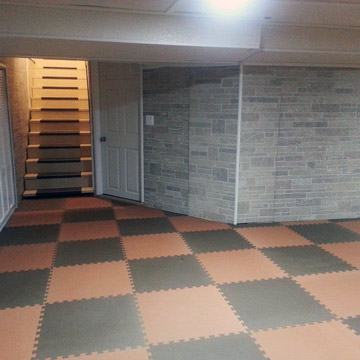
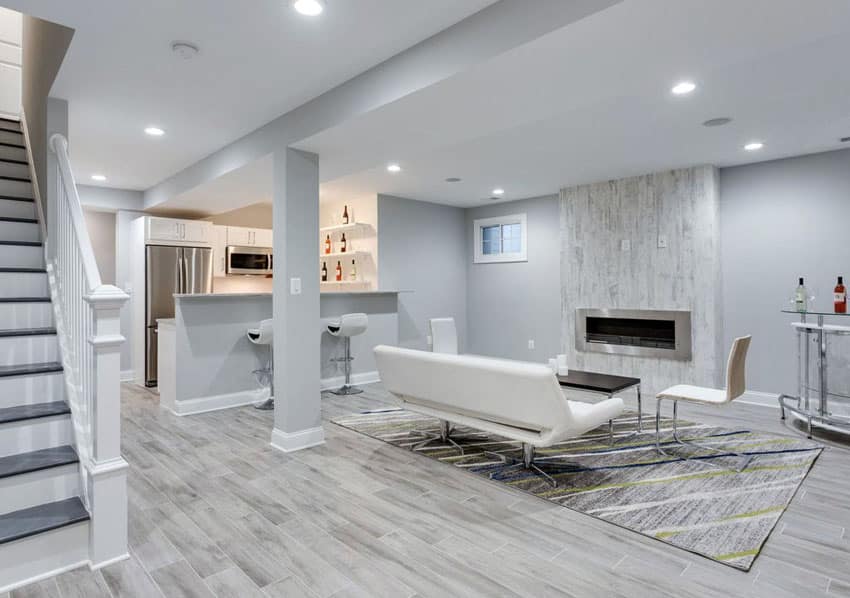
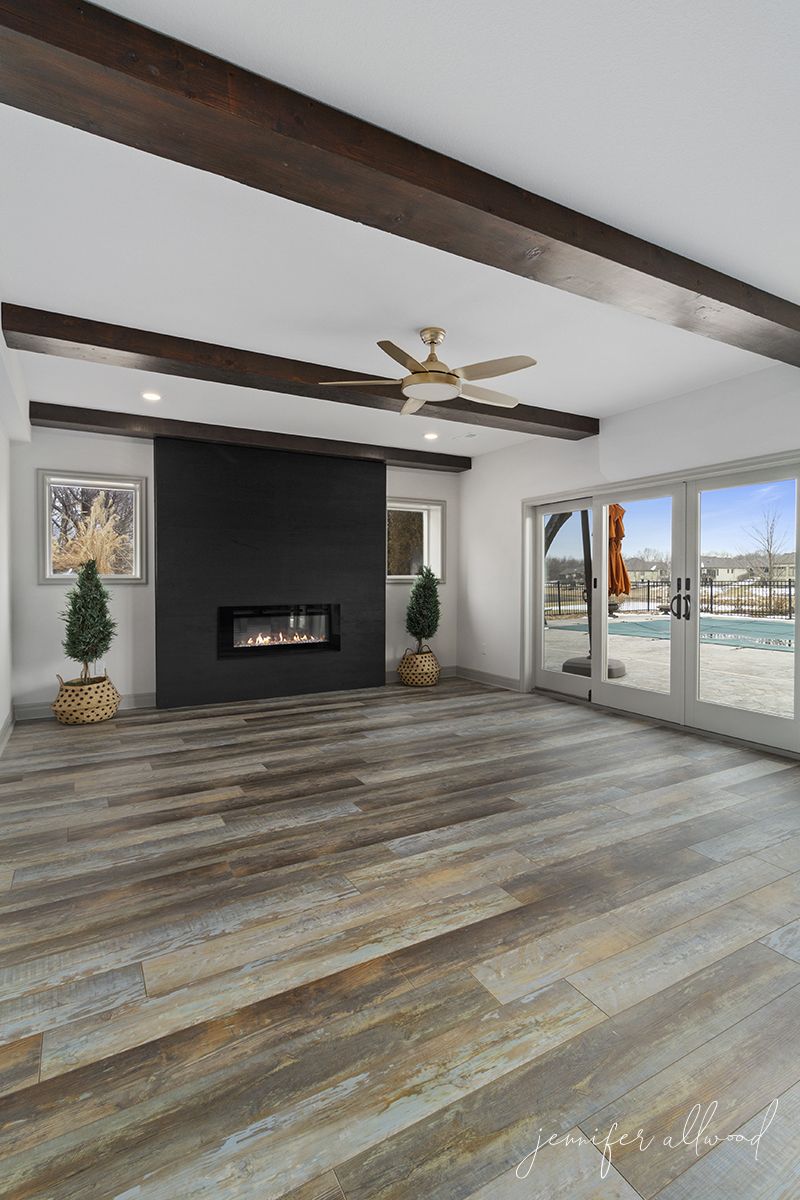


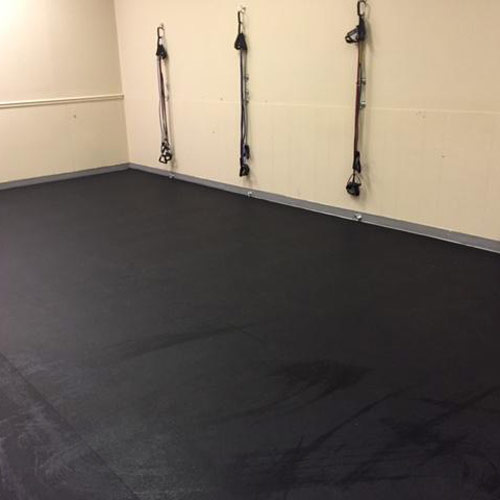
.jpg?widthu003d800u0026nameu003d11513489635_f12521f2a2_k%20(1).jpg)
